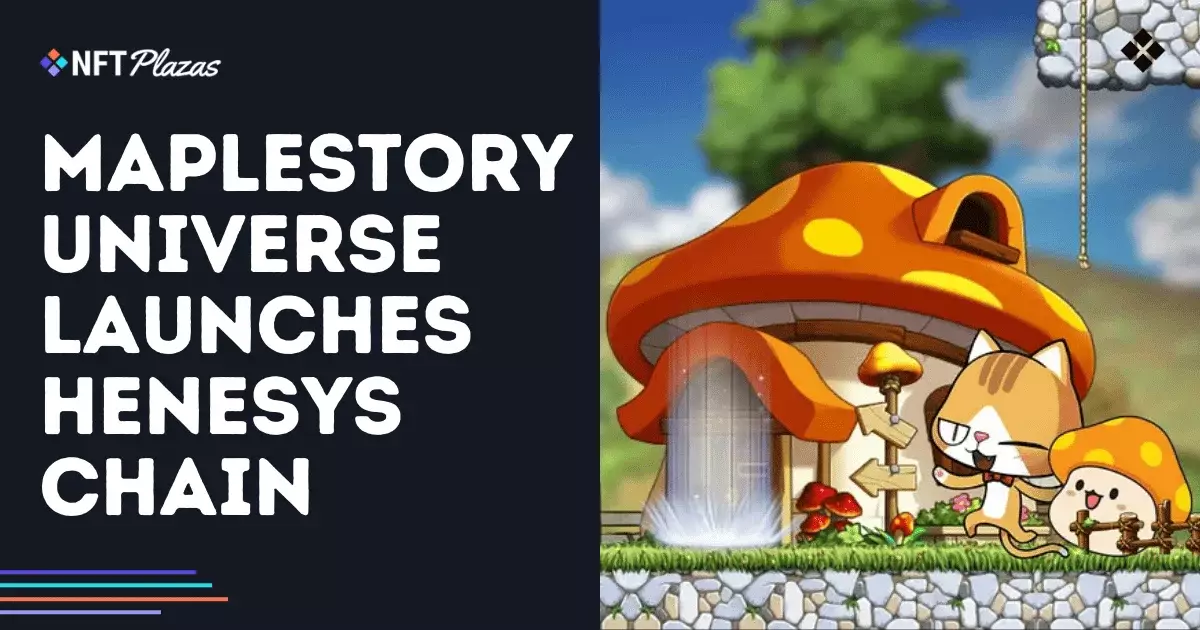The gaming industry has reached an intriguing crossroads with the launch of the Henesys Chain, derived from the beloved MapleStory franchise. While the intention behind this venture into blockchain gaming appears commendable, there are significant pitfalls that may compromise its carefully constructed narrative of innovation and player inclusivity. In an age where blockchain and gaming are colliding, particularly in a market that increasingly prioritizes decentralization, the Henesys Chain presents both opportunities and challenges that deserve critical examination.
Fading Nostalgia: A Blockchain Gamble
The nostalgia surrounding MapleStory is palpable among its dedicated fanbase. However, the transition to a web3 gaming ecosystem raises concerns about the authenticity of the experience. By embedding blockchain technology into the game, MapleStory risks overshadowing its original charm. Focusing on technicalities like gasless transactions and the permissioned NFT systems could alienate casual players who might feel overwhelmed by the complexity of blockchain architecture. The essence of gaming should remain rooted in the joy of play rather than the hurdles of adopting new technology.
Additionally, the attempt to replicate nostalgia through the creation of a custom Layer 1 blockchain feels more like a marketing gimmick than a genuine effort to enhance the gaming experience. While the Henesys Chain draws its name from a cherished location in the original game, it also reveals a profound disconnect. An authentic return to the game’s roots isn’t achieved through a new technological interface but rather through a core commitment to enriching player experiences.
The Illusion of Ownership and Scarcity
MapleStory Universe’s move toward a permissioned NFT model sets the stage for a slippery slope regarding digital ownership. The claim that this permissioned system will preserve item value and scarcity sounds appealing, yet it raises fundamental questions about what true ownership means in a digital world. If the minting of NFTs is restricted solely to authorized smart contracts, players find themselves at the mercy of gatekeepers who dictate not only what items are created but also their value. The blockchain was conceived as a means to bypass such limitations, spinning a web of true ownership that the Henesys Chain may ultimately undermine.
Moreover, the promise of Chainlink’s Verifiable Random Function (VRF) for fair in-game mechanics sounds enticing, but it exposes players to algorithmically manipulated experiences. In theory, randomness ensures fairness, yet in practice, this model can lead to manipulation by those with a deeper understanding of the underlying code. The suggestion that this is an evolution in gameplay falls flat when the potential for exploitation looms large.
Developer Constraints and Ecosystem Weaknesses
Henesys Chain’s upcoming Software Development Kit (SDK) seeks to engage third-party developers in crafting Synergy Apps that extend the game’s reach into decentralized experiences. However, requiring developers to work within tightly regulated frameworks stifles creativity. Real innovation thrives in conditions of freedom and risk-taking, not within well-structured parameters designed to serve the interests of a single IP.
Compounding this issue is the ambition of transitioning into a “Participate-to-Own” economy with the $NXPC token. By linking items’ creation and enhancements directly to economic performance, MapleStory Universe risks overshadowing the intrinsic motivations that originally drove players—exploration, creativity, and interaction. Real economic activity shouldn’t stem purely from artificially induced demand. As the network shifts its focus towards capital generation, the player experience may deteriorate, giving way to a soulless capitalist endeavor masquerading as community collaboration.
The Ideal vs. Reality: Interoperability and Community Engagement
The vision for future interoperability with other games and blockchains seems noble, yet history tells us that such ambitions can often entangle projects in a web of unfulfilled promises. While the intention to allow assets to move seamlessly across various platforms is admirable, the practical execution of this concept tends to elude game developers. Many past initiatives have fallen flat, and it’s crucial to temper expectations surrounding the grand vision of an interconnected digital economy.
Lastly, the forthcoming public blockchain explorer and initiatives for enhancing transparency introduce an element of accountability previously absent from many gaming platforms. Still, they may serve as little more than band-aids over deeper systemic issues if community feedback is disregarded. Players are increasingly wary of initiatives that prioritize corporate interests over authentic engagement with their community.
While Henesys Chain ushers in innovative technology for MapleStory Universe, it’s essential to scrutinize its execution carefully. True progress lies not just in technical accomplishments, but in preserving gameplay integrity and fostering genuine player relationships. If these elements falter, MapleStory risks losing its heart beneath the weight of innovation.
















Leave a Reply